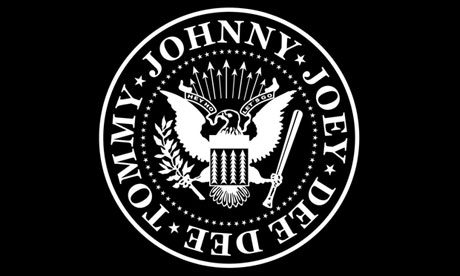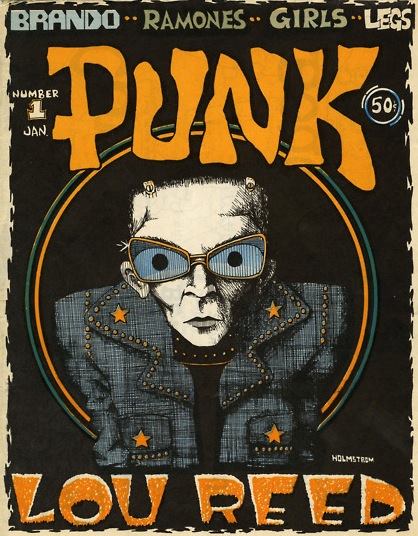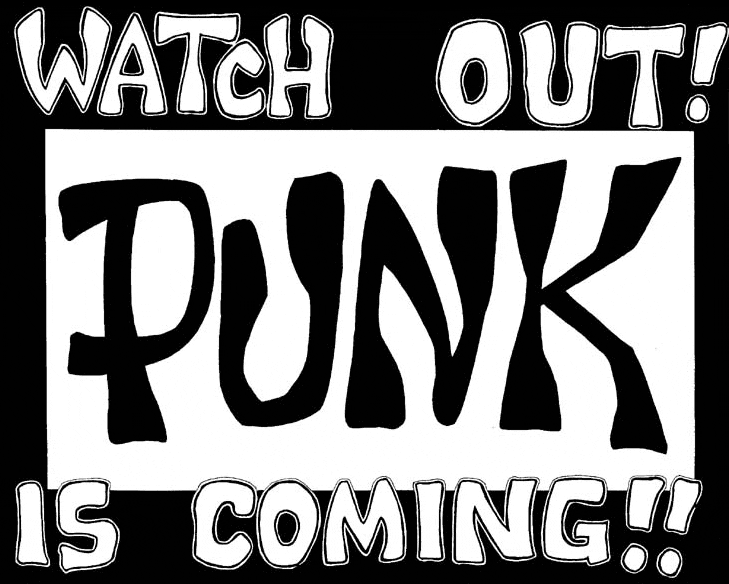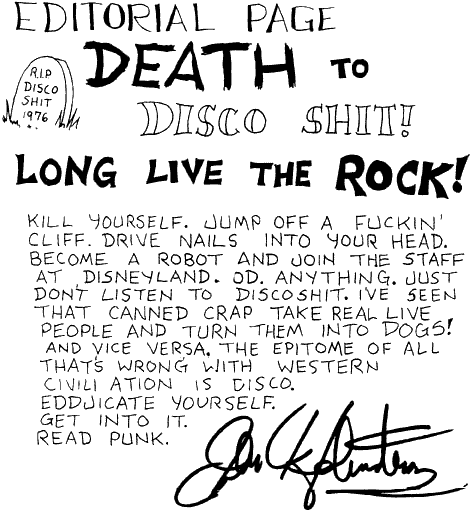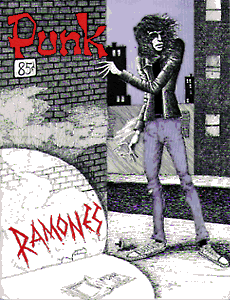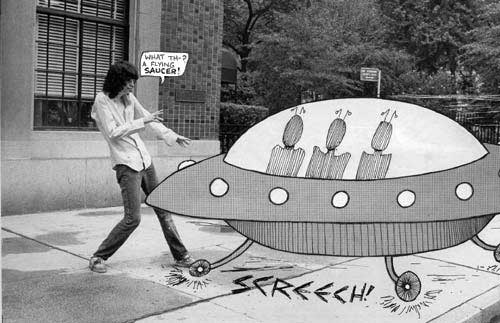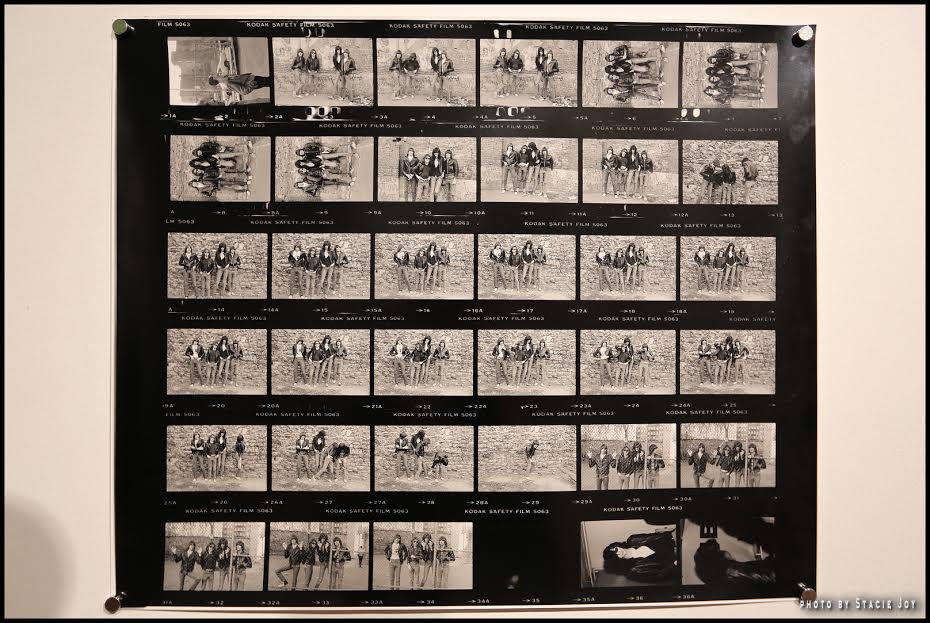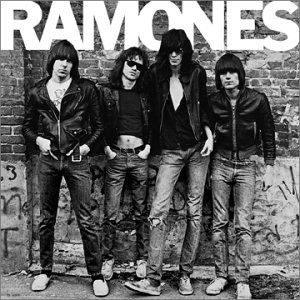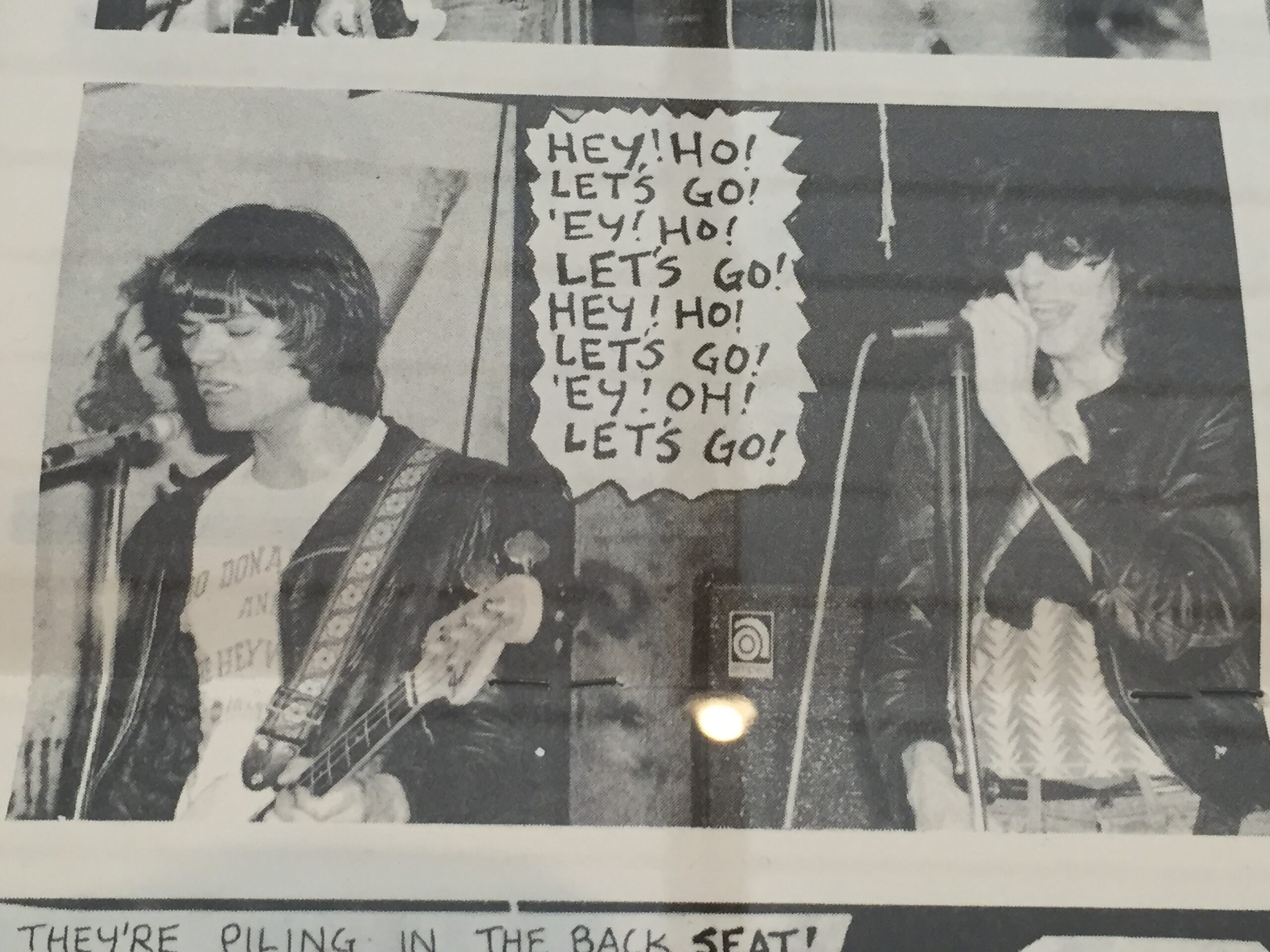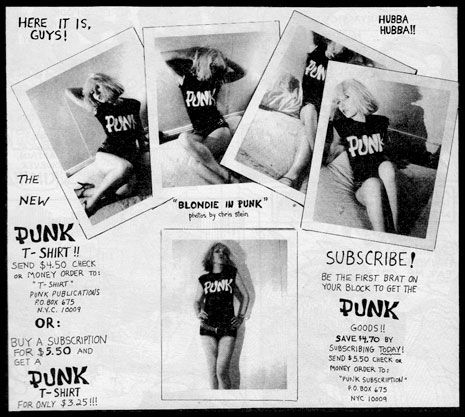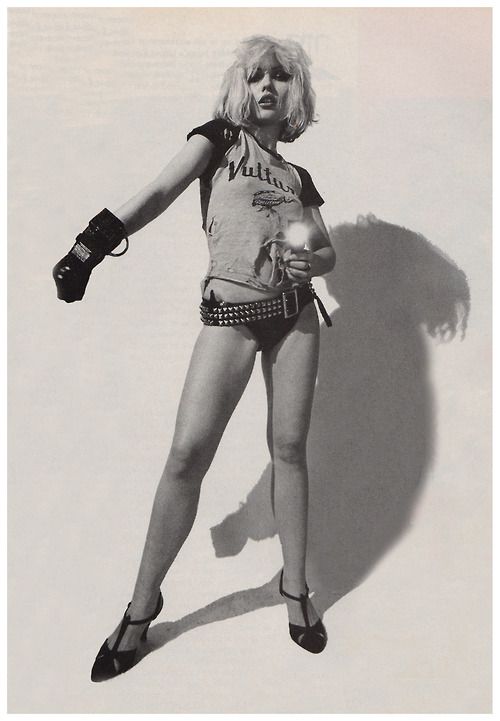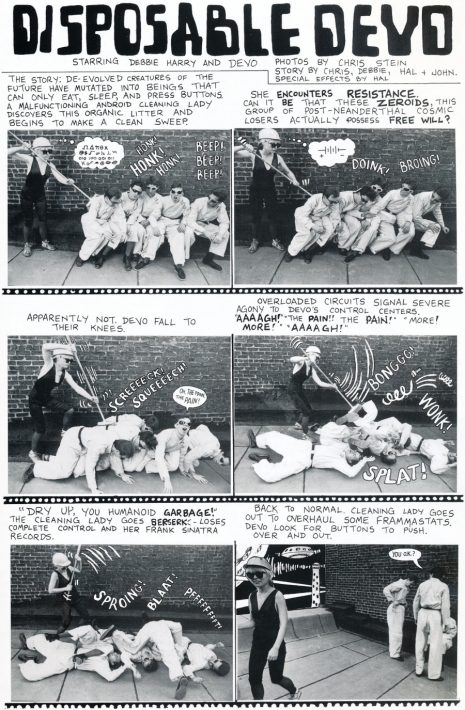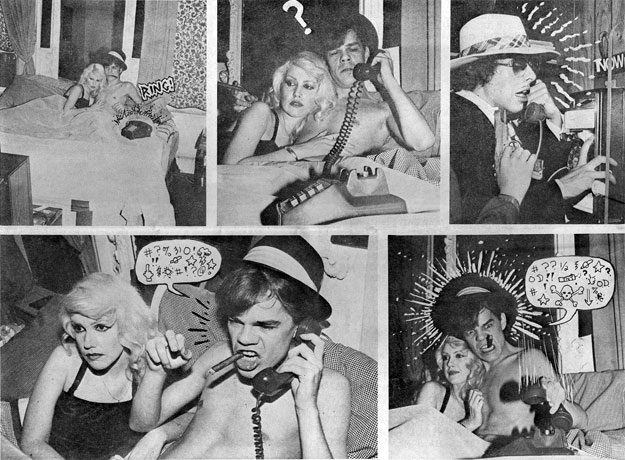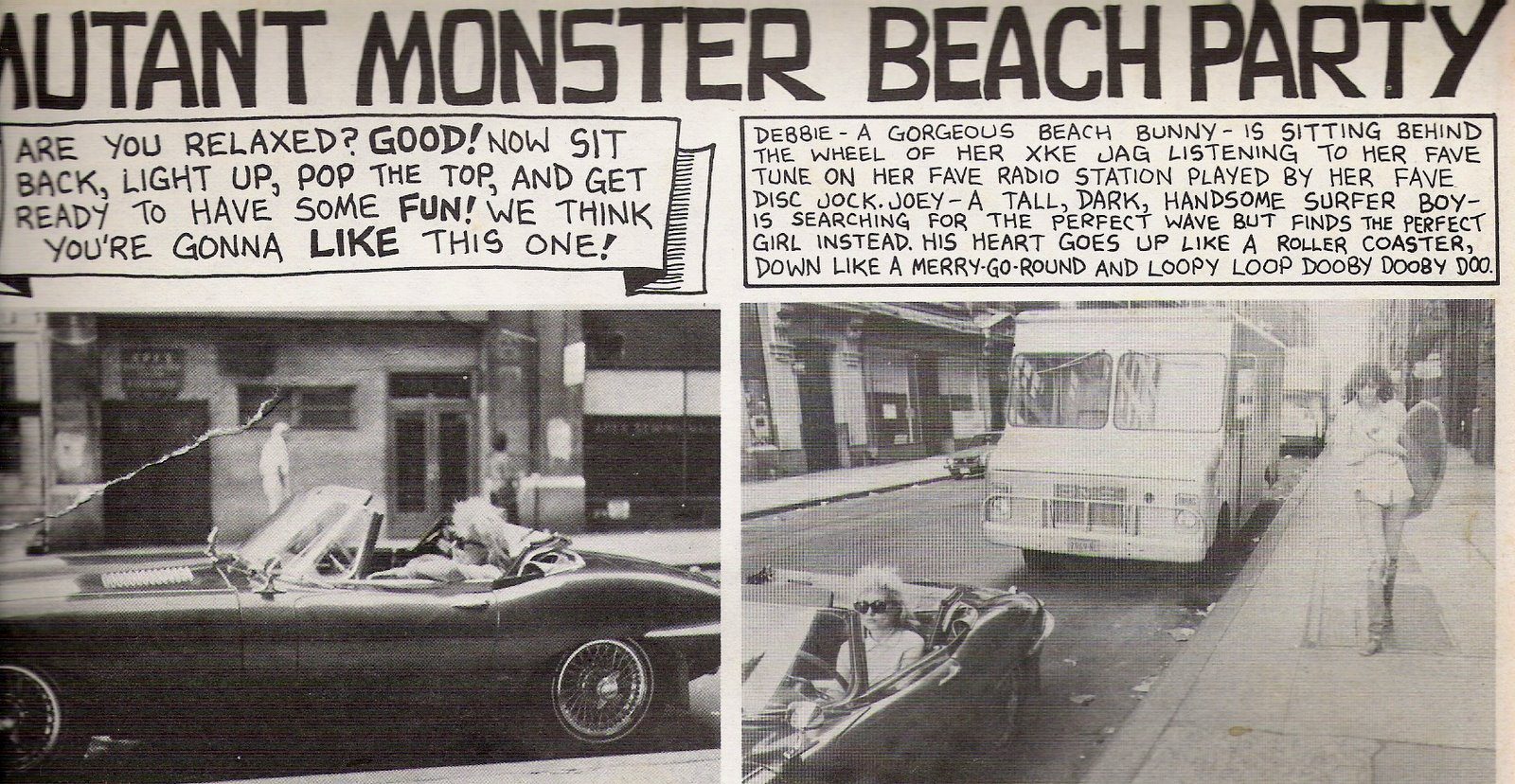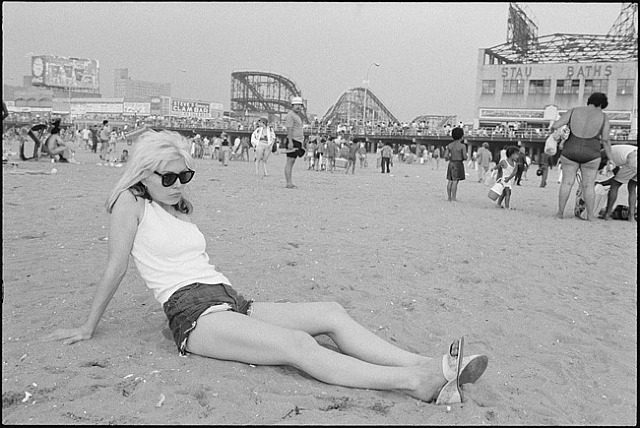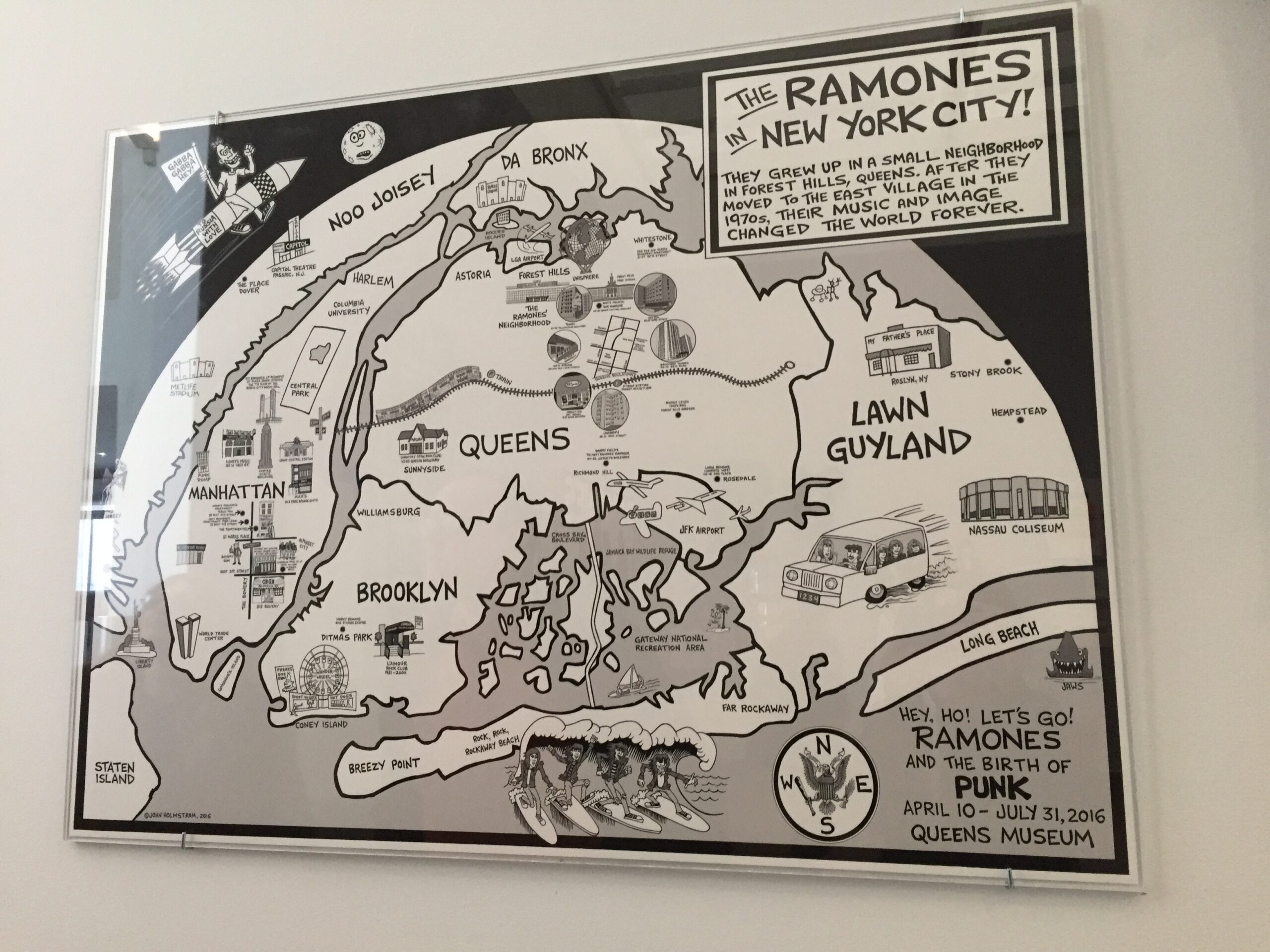Welcome back to Sound & Vision, the Rumpus profile series that spotlights the creative talents of those working behind the scenes in the music industry. In conjunction with the fortieth anniversary of the release of the Ramones’s self-titled debut album, the Queens Museum and the GRAMMY Museum have partnered to present Hey! Ho! Let’s Go: Ramones and the Birth of Punk, a two-part bicoastal exhibition celebrating the lasting influence of the band. The first part, which opened in Queens in April and runs through the end of July, focuses on the Ramones’s connections to visual culture through music, fashion, fine art, comics, and film.
The Ramones’s famous logo was designed by Arturo Vega, who has often been called “the fifth Ramone.” As the band’s artistic director and spokesman, Vega was responsible for everything from merchandise design to lighting, but he was by no means alone in cultivating the Ramones’s image. To pay tribute to three others who had a hand in shaping the look of the Ramones, and more broadly the visual aesthetics of punk, I’m taking a departure from Sound & Vision’s usual one-on-one interview format. What follows is an edited and condensed transcript of a June 19 panel discussion at the Queens Museum. Among the participants was Punk Magazine co-founder John Holmstrom, chief photographer Roberta Bayley and Blondie co-founder and guitarist Chris Stein, who was also a contributing editor/photographer at Punk. The panel was hosted by the exhibition’s guest curator Marc H. Miller.
***
Miller: I thought I’d start off by asking everyone to explain his or her connection to Punk Magazine. Let’s start with you, John.
Holmstrom: Sure. It was my idea to start a magazine about punk rock. I was a big fan of Alice Cooper, and the New York Dolls, and I heard about this scene happening at CBGB. Roberta and Chris were there way before me, but it was my idea to start a magazine that would be like the MAD Magazine of rock ‘n’ roll. We’d have a lot of cartoons, photo comics, and interviews—but not so serious, because punk was not so serious.
Bayley: I became involved with Punk Magazine around January of 1976. One night, I was working the door at CBGB when Legs McNeil came in. He said, “Hi, I’m Legs McNeil and I get in for free.” And I said, “No, please.” And he said, “No, I work for Punk Magazine.” So I said, “Give me a free copy and I’ll let you in.” And he goes, “No! It’s fifty cents at the bar!” I thought he had a good attitude so I let him in. We all probably regret that now. [Laughs] Anyway, I went to the bar and bought the magazine, it was issue #1 with Lou Reed on the cover. And I laughed out loud. It was the best thing I’d ever seen. There was an article on Marlon Brando, cartoons, games, and other wacky stuff, plus this incredible interview with Lou Reed along with a photo comic. It was astonishing and I thought I have to work for these guys! Luckily John and I really hit it off and I ended up becoming the chief photographer.
Stein: My first memory was of seeing a flier that said, “Punk is coming!!” I was with a bunch of other people and we all said, “This is the shittiest name for a band!” Little did we know it was these guys with their magazine. With Blondie, the aesthetic came from comic books and grade B movie culture. It was a no brainer. These were nice guys, John especially—Legs was kind of a jerk, but also a nice guy. [Laughs] It was all do it yourself. There was no corporate entity overseeing the production. Everyone slotted themselves into where they wanted to be. One of my favorite things was this interview they printed with Ronnie Toast who was a real character. He was a friend of our drummer and I interviewed him about his crazy rantings and how he loved Godzilla.
Holmstrom: We published it because Debbie hand-lettered it. That’s how closely we collaborated. Chris also did a story about UFOs in Australia, and a photo comic with DEVO. Chris was always coming up with weird ideas for the Magazine.
Stein: I tried!
Miller: I think one of the things that should be said here is that John was a cartoon major at School of Visual Arts and Chris was fine arts major there. John, can you explain the philosophy of Punk Magazine and the relationship between the visuals and the music?
Holmstrom: I don’t think there was really such a thing as “punk rock” until the magazine came out. They were calling the loud, fast music of bands like the Dolls and the Stooges “punk rock” but there was no visual to it yet. We provided the look. I would often use the lyrics as an inspiration for the articles. So in the first issue, for example, we did a photo comic called “Cars and Girls” where we used a lot of the concepts from the Dictators’s Go Girl Crazy!, which some people think was the first punk rock album.
Miller: A number of publications were pushing various bands and calling it “punk rock,” but it was the presence of Punk Magazine at CBGB and the rise of all the bands coming out of there that secured the name and associated it with a certain type of music. John, what was the philosophy of Punk?
Holmstrom: [Punk co-founders] Ged Dunn, Legs McNeil, and I were very aware of the media. We would talk about how the decade would define itself in the middle. You know, the Beatles came out in the mid-60’s, and then rock music really took off. We figured it was about time for a new movement to start and we could be the voice of that movement. I wrote a disco editorial as a joke and I was a little shocked when people wanted us to make T-shirts with it, to really promote the “death to disco” movement.
Stein: I wanted to ask you about that because lately in interviews, maybe over the last three years or so, it keeps coming up. Did you really hate disco music, or was this more of a stance against commercialism—like the way someone might hate Justin Bieber these days?
Holmstrom: It would be more like hating Justin Bieber. I mean I wrote the editorial because I had space for one, and I didn’t know what to write, and it was due at the printers. I was also getting really sick. I had the flu, and I had a fever, so I just wrote the stupidest thing I could think of and everyone loved it. It became the focus of the magazine, and I remember Iggy (Pop) met with us and said, “You shouldn’t hate any kind of music!” I tried to explain that we didn’t want anyone to go out and kill disco people!
Miller: But it became very serious. And people began to associate it in terms of knocks on sexual orientation and race, which wasn’t intended.
Holmstrom: Look, we really loved rock ‘n’ roll and we wanted to see it back and in prominence. Also, I want to give credit to Blondie here because when they brought out “Heart of Glass” all the discos started playing punk rock and new wave.
Stein: Well, it was a weird moment for us because we had been in the rock ‘n’ roll environment and then suddenly we’d be in these full-on disco clubs where no one knew anything about us except for the one song. We also did a couple of disco TV shows where we were an anomaly. But I always liked disco music, especially the early stuff, which was very raw.
Bayley: Actually, we did cover Donna Summer in Punk. But to answer the question about the philosophy of Punk, what attracted me to it was its humor. It didn’t take itself seriously. Remember, Rolling Stone was the premier magazine at the time and it was very “serious” about rock and that served its purpose when rock was still trying to get legitimized, but by the time punk came along rock was like too legitimate, too establishment, too staid. So the rebellious aspect of Punk was something that really appealed to me. Beyond that it was the visual aspect that I really loved, and still do. I remember, for example, when I would do a shoot for a photo comic and I’d be worried if I missed something, and they’d say, “Don’t worry, we can draw it in later.” It was like shooting against a green screen for movies, like Joey Ramone didn’t have to go surfing because we could draw in the waves. We didn’t have to hire “real” aliens. We just drew someone into an alien.
Holmstrom: For the cover of issue #3, which featured the Ramones, I did a Will Eisner-inspired drawing. He was one of my instructors at the School of Visual Arts, and a great inspiration and also very supportive. Harvey Kurtzman, who also taught me there, and was the founder of MAD Magazine, was great too. We even brought him to CBGB.
Miller: That issue also highlights some of Roberta’s contributions to Punk Magazine and beyond. Can you tell us more, Roberta?
Bayley: Sure. There are a lot of people who like having their picture taken, or at least are very good at it, such as Debbie Harry, Richard Hell, and David Johansen. But I don’t think the Ramones were particularly fond of it. I went with John and Legs over to the “Ramones loft” which was really Arturo Vega’s loft on East 2nd Street. We did quite a few pictures in front of the Ramones banner, but it just wasn’t the right feel. So we decided to go outside, make a left at the end of the block, and there was a playground. We went in and did a few setups there.
Bayley: I think the reason that session went so well was because at the time it was “just” for Punk Magazine. But the twelfth frame on the third row of that session—the 35th row of film that I’d shot through on my camera—became pretty well known when it appeared on the cover for the band’s debut album.
Stein: How did that come about?
Bayley: Someone got a call from the Ramones’s manager, Danny Fields. Sire Records had hired a professional photographer and paid him a lot of money to shoot the band. And they just hated the pictures. I think they were kind of close-ups, like they were going for the look of the Rolling Stones’s Out of Our Heads, or Meet the Beatles. They were shooting up their noses so their nostrils looked really big, so they were like, “We can’t use these! They’re horrible!” So they started calling people, and they asked for my contact sheets, and they picked the picture. They paid me $125, and they’ve been ripping me off ever since! [Laughs]
Holmstrom: Roberta may not want me to tell you this, but I remember I wanted to do that session very specifically because she had taken the first publicity photo of Ged, Legs, and me, and it went all over the world. Then she had done another photo comic with us that didn’t work out, so I promised her she would do our next big assignment, and it turned out to be the Ramones.
Miller: I remember in the 60s a lot of the musicians, especially in England, came out of art school. Chris, I’m wondering about the choice between being a visual artist and being involved in music.
Stein: Now my little daughter is going to go to middle school and their music program is very rock ‘n’ roll oriented—they have electric guitars hanging on the wall and all that kind of stuff. But when I was a kid there weren’t any music schools except for Julliard. Pop music schools didn’t exist as a thing. When I was at Visual Arts it was the height of the conceptual arts period, which I found kind of dry. Being more of a romantic I gravitated toward photography. I was always a music fan, and I started seeing fliers in the lobby at school for the New York Dolls, which I always assumed was a drag act. Now I’m a big drag aficionado! But back then I was more of a music freak, and I finally saw a review of the Dolls in the Voice and I went to see them. I hooked up with a guy called Eric Emerson who was in a band called the Magic Tramps, which just got a shout out on that show Vinyl. That’s how I got embedded in the scene.
Miller: How would you describe the photography you did within Blondie?
Stein: It was casual, journalistic. I thought of myself as an art photographer. I would shoot full frame. I would never crop anything. It was always about composition. But, you know, Debbie was such a great subject and there were other charismatic subjects around CBGB too, so it was easy to get cool pictures!
Stein: We once did a session with Debbie with no clothes on, being covered up by a Gibson SG, but we took it to John and he said, “These aren’t punk enough!” So we did a reshoot. The glove thing was a Johnny Power Ranger toy. I think we found it in the garbage or a junk store. And she has like a ray gun in her other hand, and the vulture T-shirt became a thing. My friend found that years before in Brooklyn and we never knew what the hell it was. Maybe it was a softball team or something? It eventually became part of the Blondie merch crap.
Miller: It’s a little “out and out” sexy and a little “tongue in cheek “sexy. How important was Punk Magazine to defining Blondie’s image?
Stein: Punk was ironic and self-aware. It was a big part of it all certainly, to us, and to the community. It brought a lot of people together.
Miller: One of the things Punk popularized was also the fumetti, or photo comic. Chris, can you tell me more about how these were put together, for example, in “Disposable DEVO” from issue #12?
Stein: Well, I remember Anya Phillips, who was the girlfriend of James Chance, was a real mover and shaker on the downtown scene. She was the first one who came to us about DEVO—they’d played at Max’s before and they came to CBGB on audition night. And she said, “You have to see these guys! They’re amazing!” We started hanging with them right away. These pictures were taken on the roof of the place where we were living on 17th Street. They put their two cents into it. They wanted to be swept up like garbage!
Holmstrom: Chris brought in the photos. I think Hal [Drellich] and I brought in the words. We just made up some “sound effects” and captions.
Miller: Perhaps let’s talk about another, this one with Roberta’s photography from issue #6, “The Legend of Nick Detroit.” [Editor’s note: this piece told the story of Nick Detroit, a former top international agent and super-killer cum world-weary mercenary battling the infamous “Nazi Dykes” and their schemes for world domination. It starred Richard Hell as Nick, and featured Legs McNeil, Quine, David Johansen, Debbie Harry, Lenny Kaye, David Byrne, and a host of others as “extras” including Terry Ork, Anya Phillips, and Nancy Spungen.]
Bayley: This was my version of shooting a movie, only we didn’t have a movie camera and we couldn’t have afforded that. But we could in a way with photographs. We had everything but the clapboard.
Stein: I think there’s a comment here for our current times, with the fact that we’re dealing with “Nazi Dykes.” You could easily put a swastika on the cover of your magazine, and nobody gave a shit.
Miller: My memory was there was more of an attempt to be provocative, and to be transgressive.
Bayley: I just want to say that’s always been rock ‘n’ roll. In the 50s it was having greasy hair and wearing pink pants that was subversive. Good rock ‘n’ roll always has some element of that.
Holmstrom: Also, CBGB was a biker bar back then and the bikers were always wearing swastikas and iron crosses, so I think punk was kind of lifting from biker culture as opposed to the hippie culture because we were bored with the flowers, and the love, and the colors.
Stein: That was also what was so great about the Velvet Underground, which showed up in the midst of the “flower power” movement. There was suddenly this black leather record with people singing about doing heroin and stuff. I remember being very appreciative of that at the time.
Miller: And certainly the Ramones have a few provocative lyrics! The most elaborate of Punk’s photo comics was “Mutant Monster Beach Party,” often cited in any discussion as a favorite.
Holmstrom: We worked on this particular issue for two years. Legs wrote the script right after “Nick Detroit” but it needed a lot of rewriting because it was basically a reworking of the fumetti The Horror Party Beach, which was published by Warren, the same publisher who put out Help! Magazine, Creepy, Eerie, and Vamperella. Our first casting idea was to have Joey Ramone be the surfer, and Debbie Harry be the girlfriend. The jaguar was just parked on the street. We asked if it was okay if we could shoot some pictures in it and the guy said okay.
Stein: Yes, it was on the street in front of the same apartment where we did the DEVO shoot.
Miller: One of the shoots was taken at Coney Island.
Bayley: Yes, this one is mine, and it’s become a very popular picture. Debbie is sulking because she’s acting. Maybe she’s just bored out of her mind, because we were explaining to her that she’s been stood up by her boyfriend, and she’s angry that he’s late… But what’s great about it, when you look in the background, is there are a lot of people staring like what the fuck’s going on here? Debbie wasn’t famous yet, but someone taking a picture of a blonde attracts attention. And maybe they were wondering what are these crazy kids doing! And we also had the bikers, the surfers. The film director Mary Harron, who went on to direct the films I Shot Andy Warhol and American Psycho, is there in a bathing suit. So is Paul Zone, a wonderful photographer who has a book called Playground. The Dictators were there too! For the big group scenes, we would just say, “Anybody who wants to show up, come on down!”
Stein: It’s amazing it was that organized, actually.
Bayley: [Laughs] Yes, it is hard to believe! But people really, really wanted to be in Punk Magazine.
***
BONUS MATERIAL
Here’s a playlist of some of my favorite bands who’ve graced the pages of Punk Magazine:
And for more on what the panelists are up to now: John Holmstrom made this Ramones-centric map of Forest Hills, entitled “The World According to the Ramones, 2016,” for the Queens exhibition:
Holmstrom will also be special guest at the Treviso Comic Book Festival in September, 2016. This is his first international solo art exhibition.
Chris Stein published the photography book Negative: Me, Blondie, and the Advent of Punk on the occasion of Blondie’s 40th anniversary. Blondie is currently working on a new album.
Roberta Bayley has published several books, including PUNK: The Book and I Survived First American Tour 1978, a photographic chronicle of the Sex Pistols’s first US tour.
***
Special thanks to the Queens Museum for permission to record and present this panel, and for permission to photograph exhibition materials as identified. Feature photograph, photograph of the Ramones’s “Hey Ho” photo comic, and photograph of the Ramones map © Allyson McCabe. Photo of Roberta Bayley’s Ramones contact sheet © Stacie Joy. All other images courtesy of Punk.
***
This interview has been edited and condensed. If you’d like to recommend someone for “Sound & Vision,” drop Allyson a line here.

